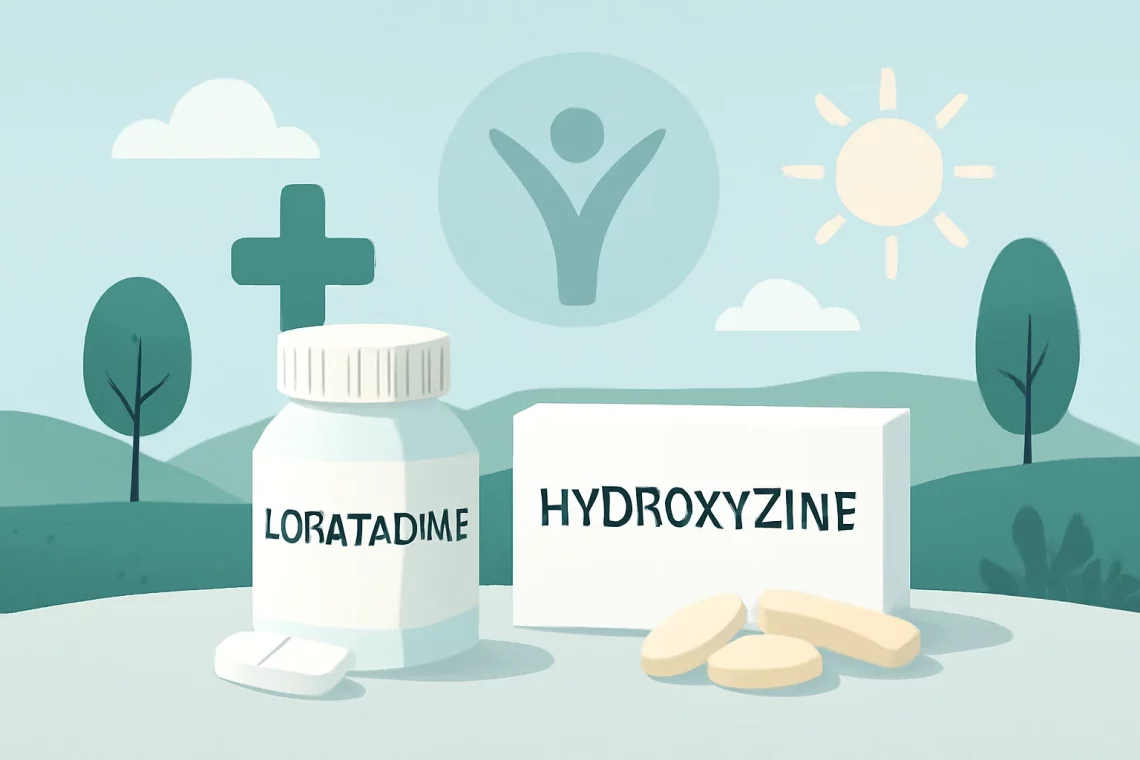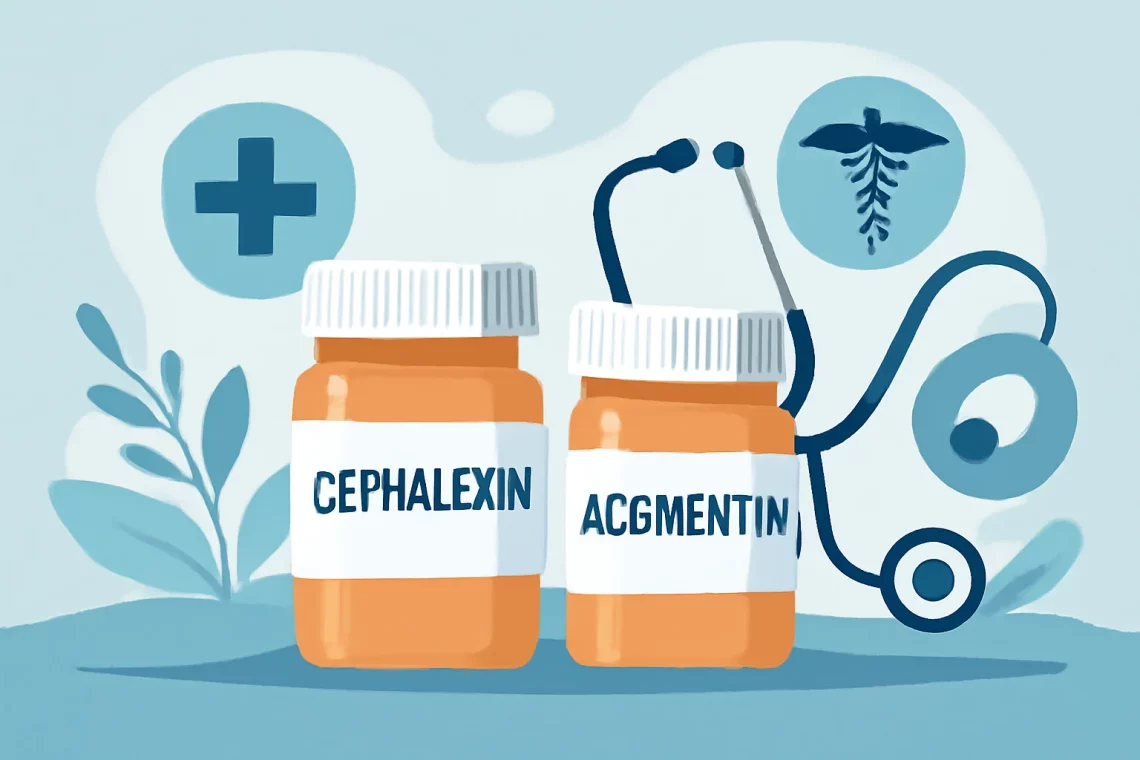-
Olanzapine or Risperidone: Which Antipsychotic is Right for You?
Olanzapine and risperidone are two widely used atypical antipsychotic medications that have transformed the landscape of mental health treatment. As mental health awareness increases, many individuals find themselves seeking information on these medications, particularly when faced with conditions such as schizophrenia, bipolar disorder, or severe depression. Understanding the differences, benefits, and potential side effects of these drugs is crucial for both patients and healthcare providers. In recent years, the conversation surrounding mental health has evolved significantly, with an emphasis on tailoring treatment to individual needs. This has led to a growing interest in atypical antipsychotics, like olanzapine and risperidone, which are often preferred for their efficacy and generally favorable side…
-
Amoxicillin vs Ceftin: Key Differences and Uses Explained
Amoxicillin and Ceftin are two commonly prescribed antibiotics that belong to the beta-lactam class of medications. Both are used to treat a variety of bacterial infections, but they differ in their specific applications, mechanisms of action, and side effects. Understanding these differences is crucial for both patients and healthcare providers when it comes to selecting the most appropriate treatment for a specific infection. As antibiotic resistance becomes a growing concern in healthcare, choosing the right antibiotic can significantly impact treatment outcomes and the overall health of individuals. The development and use of antibiotics have transformed medicine, allowing healthcare professionals to effectively manage infections that, in the past, could have been…
-
Loratadine vs Hydroxyzine: Which Allergy Medication Is Right for You?
Loratadine and hydroxyzine are two widely used antihistamines that serve different purposes in the realm of allergy and anxiety treatment. As individuals seek relief from allergic reactions, hay fever, or anxiety, understanding the differences and similarities between these two medications becomes crucial for making informed decisions. Both drugs are effective in alleviating symptoms associated with allergies, but their mechanisms of action, side effects, and usage guidelines vary significantly. While loratadine is often preferred for its non-drowsy effects, hydroxyzine is known for its sedative properties and is frequently used in cases where anxiety relief is also needed. This article aims to explore the characteristics, uses, and potential side effects of each…
-
Ranitidine vs Famotidine: Which Antacid is Right for You?
Ranitidine and famotidine are two widely used medications in the realm of gastrointestinal health, primarily for their ability to reduce stomach acid production. As prevalent as heartburn and gastroesophageal reflux disease (GERD) are in modern society, the need for effective treatment options has led to the popularity of these drugs. Understanding the nuances between ranitidine and famotidine, their mechanisms of action, potential side effects, and other factors can be crucial for individuals seeking relief from acid-related disorders. Both ranitidine and famotidine belong to a class of medications known as histamine H2-receptor antagonists, which work by blocking histamine receptors in the stomach lining, thus reducing acid secretion. Despite their similar purpose,…
-
Viagra vs Cialis: Key Differences and Which Is Right for You
Erectile dysfunction (ED) is a common issue that affects men of all ages, though it is often more prevalent in older adults. This condition can significantly impact a man’s quality of life, affecting not only physical health but also emotional and psychological well-being. As awareness of ED has grown, so too has the availability of treatments designed to address it. Among the most widely recognized treatments are Viagra and Cialis, two medications that have become synonymous with ED treatment. Both Viagra and Cialis work by enhancing blood flow to the penis, facilitating an erection in response to sexual stimulation. However, the way these medications function, their onset of action, and…
-
Nifedipine vs Amlodipine: Which is Better for Blood Pressure Management?
Nifedipine and amlodipine are both medications that belong to the class of calcium channel blockers, which are primarily used in the treatment of hypertension and angina. These drugs work by inhibiting the influx of calcium ions into the smooth muscle cells of the heart and blood vessels, leading to vasodilation and a subsequent decrease in blood pressure. As cardiovascular diseases continue to be a significant concern worldwide, understanding the nuances between these two medications can empower patients and healthcare providers to make informed decisions regarding treatment options. The choice between nifedipine and amlodipine may depend on various factors, including the specific health conditions of the patient, their medical history, and…
-
Cephalexin vs Augmentin: Key Differences and Uses Explained
The world of antibiotics is vast and complex, often leaving patients and healthcare professionals with challenging choices. Among the many antibiotics available, Cephalexin and Augmentin are two commonly prescribed medications. Both belong to different classes of antibiotics and are utilized to combat bacterial infections, but they differ significantly in their mechanisms, uses, and effectiveness. Understanding these differences is crucial for making informed decisions regarding treatment options. Cephalexin is a first-generation cephalosporin antibiotic, known for its efficacy against a variety of gram-positive bacteria. It works by disrupting the synthesis of the bacterial cell wall, ultimately leading to cell death. On the other hand, Augmentin is a combination antibiotic that contains amoxicillin…
-
Cephalexin vs Amoxicillin: Key Differences and Uses Explained
The world of antibiotics is complex and diverse, offering a range of options to combat bacterial infections. Two commonly prescribed antibiotics are cephalexin and amoxicillin. Both belong to the penicillin class of drugs, yet they have distinct characteristics, uses, and mechanisms of action. Understanding these differences is essential for making informed decisions about treatment options. Cephalexin, a first-generation cephalosporin, has been a staple in treating various infections, including skin and respiratory tract infections. On the other hand, amoxicillin, a broad-spectrum penicillin, is widely used for its efficacy against a variety of bacterial infections, including ear infections and urinary tract infections. The choice between these two antibiotics often depends on the…
-
Methotrexate vs Humira: Choosing the Right Treatment for Arthritis
Methotrexate and Humira are two widely recognized medications in the realm of autoimmune diseases and inflammatory conditions. As chronic illnesses afflict millions, the quest for effective treatment options has led to the discovery and development of various pharmaceuticals. Among these, Methotrexate and Humira have emerged as significant players in the management of diseases like rheumatoid arthritis, psoriasis, and Crohn’s disease. Methotrexate, initially developed as a chemotherapy agent, has gained popularity for its immunosuppressive properties, making it a cornerstone in treating several autoimmune disorders. On the other hand, Humira, a biologic drug that targets specific pathways in the immune system, represents a newer approach to managing inflammation and immune response. The…
-
Januvia vs Farxiga: A Comprehensive Comparison of Diabetes Medications
The prevalence of diabetes has become a pressing health concern globally, with millions of individuals affected by this chronic condition. As the medical community continues to seek effective treatments, numerous medications have emerged to help manage blood sugar levels and improve the overall quality of life for those living with diabetes. Among these medications, Januvia and Farxiga have gained significant attention for their unique properties and effectiveness in controlling diabetes. Understanding how these medications work, their benefits, and potential side effects can be crucial for patients and healthcare providers alike. Each medication operates through different mechanisms, targeting various aspects of diabetes management. As patients navigate their treatment options, it is…







































